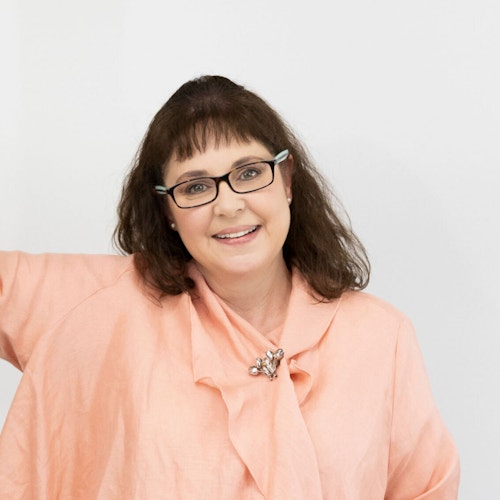

 Words by Jodie Powell
Words by Jodie Powell
The number of people identifying as being Aboriginal or Torres Strait Islander has surged in the Moreton Bay Region in the past five years, according to Australian Bureau of Statistics data from the 2021 Census released yesterday.
The data shows a 48 percent increase, compared with the national average of 25 percent, since 2016.
Aboriginal and/or Torres Strait Islander people now make up 3.9 percent of the region’s population, ahead of the national figure of 3.2 percent.
Australian Statistician Dr David Gruen says the rise is not due to a natural increase, but rather a sign of more people being comfortable about acknowledging their heritage.
“One of the things that I think is very encouraging is the proportion of people who are over 65 who are Aboriginal or Torres Strait Islander has gone up by roughly 50 percent.
“I think it will pay a lot of research for actually find out why it is that people are feeling comfortable about identifying as Aboriginal and Torres Strait Islander.”
Dr Gruen says information collected as part of the Census is vitally important to help governments and local organisations plan for health, education and community services for Aboriginal and Torres Strait Islander people into the future.
Family favourite

More families are also calling the Moreton Bay Region home than in 2016, with data showing there were 132,607 families in the region on August 10 last year – an increase of 14 percent compared with 115,996 on August 9, 2016 – and we’ve got more people under 20, accounting for 26.2 percent of the local population in contrast with 24.8 percent across Queensland.
Of those young people, 30.5 percent were enrolled in a primary school and 25 percent in a secondary school, compared with 27.1 percent and 22.4 percent respectively state-wide.
Tertiary enrolments were slightly lower than the state’s at 18.6 percent of the Moreton Bay population, in contrast to 21.3 percent nationally.
The rise in families is mirrored in an increase in the region’s general population, which grew from 425,302 in 2016 to 476,340 (12 percent) last year.
Housing boom
In a bid to keep pace with the rising tide of new residents, the number of private dwellings across Moreton Bay increased by 12.7 percent, to 188,200 and of those, 94.4 percent were occupied – excluding visitor-only abodes.
The Census shows we love a bit of room to move - the region is ahead of the rest of the state when it comes to the number of bedrooms per property, with 85 percent having three or four bedrooms compared with the Queensland average of 76.3 percent and the Australian average of 73.8 percent.
The median rent in Moreton Bay is slightly lower than across Queensland at $360 a week compared with $365, but 35.2 percent of people are making payments greater than 30 percent of their household income, compared with 32.3 percent state-wide.
Mortgage payments are also slightly higher at a monthly median of $1777, whereas the rest of the state is $1733 – but cheaper than the Australian median of $1863.
Marriage matters
Moreton Bay Region residents are fond of vehicles, too – 60.5 percent of occupied private dwellings are home to two or three, compared with 57.5 percent state-wide and 55.1 percent across the nation.
The percentage of people in a registered marriage is a little higher than across Queensland, with 47.1 percent of people married (45 percent state-wide), but the number of people separated or divorced is also higher at 13.9 percent in Moreton Bay compared with 13.3 percent.
The Census also found people in the Moreton Bay Region are more likely than their national counterparts to do unpaid domestic work and provide unpaid care for children or assistance to a person with a disability, health condition or due to old age.
In terms of health, 11.6 percent of residents said they were suffering from a mental health condition in contrast with 8.8 percent across Australia, 10.3 percent said they had arthritis (8.5 percent nationally) and 3.5 percent had cancer or were in remission (3.1 percent nation-wide).
More you might like

Bribie Island residents will soon have the chance to give direct feedback on public transport on and around the island, as the Department of Transport and Main Roads investigates community connectivity

With 100ha of parks, gardens, trails, fire breaks and nature reserves to maintain, Moreton Bay Regional Council is on a mission to make the process cleaner and greener. Find out how...
Related Stories
Top Stories

Info sessions for North Pine dam
Drop-in community sessions are being held over the next nine days for those wanting more information about Seqwater’s dam improvement program.


Popular Stories

'Priority' given for Waraba plans
Waraba, formerly known as Caboolture West, will be the 36th Priority Development Area in Queensland, unlocking land for 30,000 new homes and an estimated 70,000 new residents.

Trai Fuller: ‘It’s always felt like home’
Praised by Wayne Bennett for his courageous style of play and loved by long-time Dolphins fans, Trai Fuller has locked in a two-year deal with the club he calls home. He tells us why it means so much to him

4 Ingredients author to share her favourite recipes
Best-selling author behind the hugely successful 4 Ingredients cookbooks, Kim McCosker, will share three of her favourite recipes when she takes to the stage at this year’s Moreton Bay Food + Wine Festival. Find out what she plans to make here














